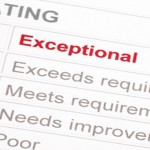Employee fatigue: A Risk Management dimension
Have you ever felt the need for more time: time to recover from physical workload and psychological stress, time for your family and the hobbies you once used to have? In an increasingly competitive world, balancing personal and professional life has become more of a race for self-performance. It is not only about the workload and time distribution, but also repetition, routine and pressure that become highly important risk factors in managing an organization’s performance based culture.
When correlations between employee distress factors and employee sickness absence are revealed, a fatigue risk management policy is, probably, the most common sense solution. Fatigue risk management processes are data driven means of continuously monitoring and managing fatigue related exposures, in order to assure employee safety and operational efficiency. While performance bonuses and days off can be a convenient incentive for prolonging work hours and taking on additional shifts, employee awareness of the risks associated with long work hours should definitely be increased.
Maximizing daily work hours may not be harmful on the short-term, but in the long run, fatigue due to over-demand may lead to incidents or accidents that are detrimental to organizational performance. While hazards are prejudicial to the organization, under-reporting or poor reporting of fatigue related workplace injuries and accidents is just a way of avoiding the obvious. Fatigue reporting systems should be available for all employees, regardless if they work in the production line or in the administrative offices. Reporting fatigue encourages appropriate handling of work-relations by coordinating all efforts to improving safety and performance within an organization.
According to a study on work related fatigue provided by the Department of Employment and Workplace Relations through the Australian Safety and Compensation Council, men having psychological distress alone or having psychological distress combined with fatigue was associated with future long-term sickness absence. However, in women, it appears that only psychological distress combined with fatigue result in long-term sickness absence. The study, therefore, points out the need for workplaces to manage the psychological elements of work, including organizing job and work tasks to minimize the risk for fatigue and psychological stress.
Data on the impact of prolonged working hours and shift work experiences revealed cognitive performance decreased with workers exposed to shift work. Memory performance also declined with increasing shift work duration. On the other hand, office work can be as harmful as handling heavy machinery or handling hazardous materials. It has been proved that sitting for too long at a desk can cause health problems such as deep vein thrombosis. The danger of developing deep vein thrombosis is that the blood clots can migrate from your legs to your lungs and heart and cause cardiac arrest. Eye strain due to fixed and close visual distance to a monitor is not only a danger to eye comfort but also a cause for mind fatigue.
Employee fatigue has obvious implications and may contribute to potentially dangerous and costly human errors. But what are the aspects that an organization must monitor in order to implement a potential fatigue risk management policy? In their book on “The Effects of Extended Workdays”, Edith Josten identifies a change in work strategies due to fatigue. The aspects that she reveals are: employees taking one or more short breaks, employees not carrying out tasks or certain parts of tasks, employees working at a slower pace and being less accurate in their performance, employees carrying out tasks at a lower level of processing or carrying out actions one after another instead of simultaneously.
In terms of contemporary performance management within an organization, key performance indicators such as % Employee turnover, # Time lost by starting work late, # Absent days per employee during peak operational periods, # Overtime hours per employee and # Sickness absence days per full time equivalent (FTE) employee are used to accurately monitor aspects leading to employee fatigue.
Such key performance indicators can predict the risk exposure to fatigue within an organization. A fatigue risk assessment must identify the impact of fatigue risks taking into account industry profile, local regulations and the strategy for performance management within an organization. Determining a Fatigue Tolerance Level, implementing software technologies to support the process of risk assessment and identifying key operational tasks that present greatest fatigue-related risks, are just a few of the tools provided for an adequate risk assessment within an organization.
It is true that by investing more effort, an employee can increase his capacity and thus maintain performance. Sometimes, such effort by determination may increase performance for a while. However, a sustained increase in effort spending will eventually increase fatigue. Working more than one’s capacity leads to working hours being cut by longer lunch breaks and reoccurring late arrivals. As this strategy may not be appreciated in most of today’s organizations, employees resort to more extreme measures and start reporting sick days. It is of the utmost importance that companies monitor sick leave and employee attendance, as this might be the crucial indicator of an organization’s need for fatigue risk management system.
Maintaining a balance between our personal and professional lives is a challenge for all of us. How we maintain this balance ultimately determines not only our success but also our happiness. However, it is a priority for the organizations we work for to determine whether performance is achieved by demanding more work hours or by predicting the risks that overtime work can have not only on the employees, but on the organization as a whole.
References:
- Josten, E. (2002), The effects of extended workdays
- Karwowski, W. (2006), International encyclopedia of ergonomics and human factors, Volume 1
- Australian Government, Australian Safety and Compensation Council (2006), Work-related fatigue, Summary of recent indicative research
- Canadian Center for Occupational Health and Safety (n.d.), Eye Discomfort in the Office
Image Source:

Tags: Employee Performance, Human Resources performance, Performance Management






